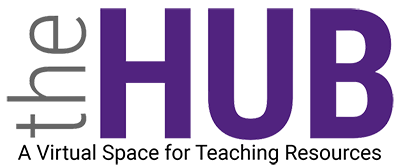 What is Multicultural Education?
What is Multicultural Education?
As early as 1987, educators like Christine Sleeter and Carl Grant (1987) described and categorized education initiatives in and for the culturally diverse US society. They studied educational practices that focus on the culturally diverse students in US classrooms and/or on the preparation of students to function in the culturally diverse US society. They proposed the presence of five approaches, all of which can be included under the umbrella term multicultural education. These approaches are listed below in the summarized form. For an extensive description, read Carl Grant & Christine Sleeter’s Turning on Learning: Five Approaches for Multicultural Teaching Plans, for Race, Class, Gender, and Disability, (5th edition 2008, published by Wiley & Sons).
- Teaching for the Culturally Different, in general, focuses on remedial teaching for students from US minority groups and international, immigrant students. The aim of these programs is to provide additional educational attention in order for these students to catch up with mainstream students. Examples are remedial reading programs for African American and Latin-X students and English as Second Language programs for students of minority and immigrant backgrounds. Also, native language (e.g. Spanish) maintenance programs fall into this category. White, majority, middle-class students are not targeted in this approach.
- Human Relations multicultural programs approach the diverse US classroom as a space for all students to learn to get along with each other, knowing that the students have diverse ethnic and cultural backgrounds. The idea behind this approach is that if students get to know about other cultures, they will be more accepting and willing to interact in a more positive way. Examples of this approach are International Day and Fairs, and using the Disney approach to diversity as in learning and singing the song “It is a Small World”. The approach targets all students regardless of ethnic background
- The Ethnic Studies approach is one of the first types of multicultural education programs, created in response to the different Civil Rights Movements and the demand to eliminate racism in the US society and in US education. In this approach knowledge about different ethnicities and cultures is incorporated into the curriculum. In K-12 settings, celebrating Black History Month is an example of this approach. The content focuses on holidays, customs, and folklore in one particular set-aside period or dispersed throughout the curriculum. At the higher education level, this approach is reflected in offering Black Studies and Chicano Studies as an option or recommendation to fulfill the General Education requirement. The idea behind using this approach could be more equity and social justice driven in that it proposes that all students, minority and majority, should learn about the diverse communities existing in US cultures.
- The major characteristic of the Multicultural Education approach is the idea that both curriculum and instruction, not just the content, should reflect the diverse US society. It claims that all students should be equipped to function successfully in the diverse US society and world. This approach can be seen as a combination of the Ethnic Studies and the Human Relation approaches. All students learn about different cultures and learn to function productively while interacting with culturally diverse people. Lessons in cultural sensitivity and culturally heterogeneous group work, for example, help prepare all students to function positively and productively in a diverse society.
- The Multicultural Reconstructionist Education approach combines the above-described Multicultural Education approach with Critical Theory and Critical Race Theory. In this approach, students learn about functioning in a diverse society that is characterized by power and material disparities (May & Sleeter, 2010). Students learn about US practices of exclusion and discrimination, in the past and in the present, as well as about the struggle against oppression and personal agency. We find examples of this approach in instructors examining and countering racial stereotypes in their own teaching style and eurocentrism in content and instructional material. In this approach, students learn about current-day racial segregation, for instance by critically analyzing high school tracking in college, basic, and vocational tracks. Through course content and through practicing critical thinking skills in the classroom, students learn to be activists for equity, diversity, and social justice. This approach is directed at both minority and majority students.
References
Grant, Carl. A. & Sleeter, Christine. E. (2007, March 1). Doing multicultural education for achievement and equity (1st ed.). Routledge.
Grant, Carl. A., & Sleeter, Christine. E. (1989, January 1). Five approaches to multicultural teaching: Plans for race, class, gender and disability. Merrill Pub Co
May, Stephen & Sleeter, Christine. E. (2010, February 24). Critical multiculturalism: Theory and praxis (1st Ed.). Routledge.
